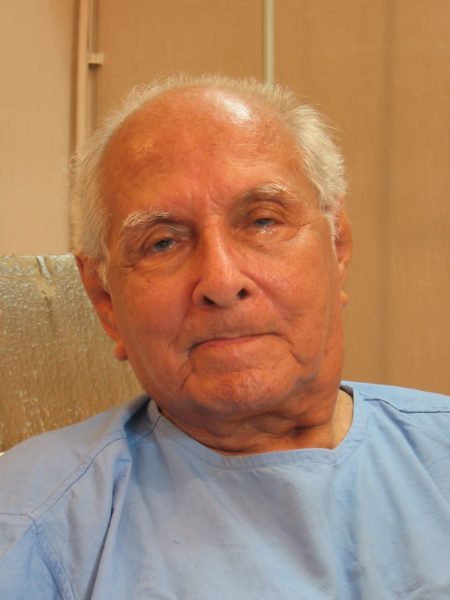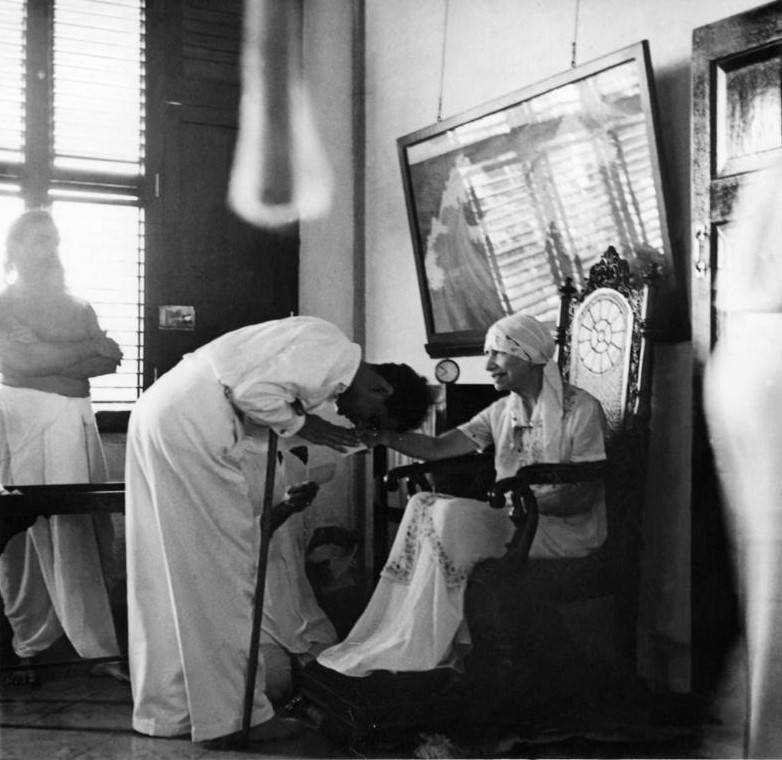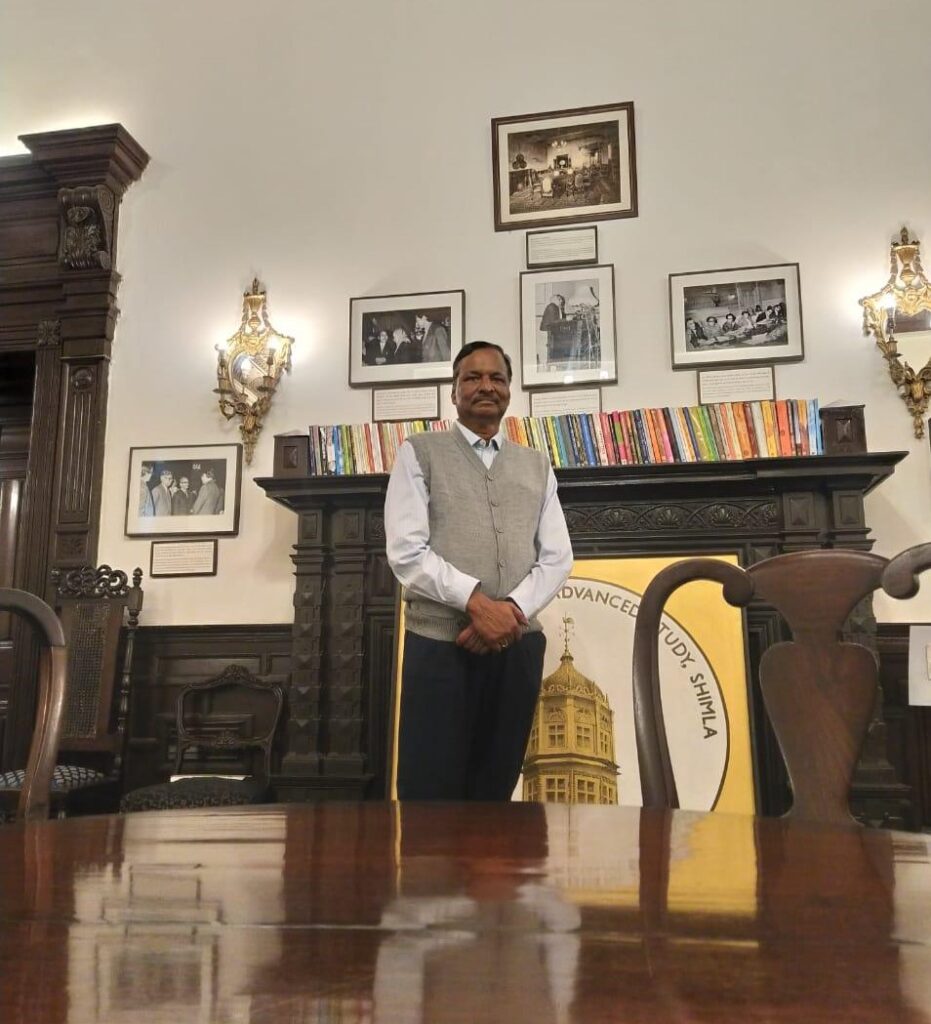
A member of the Bombay’s literary circle in the Fifties of the last century that included A.S. Wadia, Simon Pereira, Armando Menzies, D.F. Karaka, Frank Moraes, Frederick Mendonca, R.K. Karanjia and Nissin Ezekiel. K.D. Sethna had intellectual ties with Aldous Huxley, Paul Brunton, Albert Einstein, Kathleen Raine and other celebrities of his time. A multitalented personality, he was a close follower of Sri Aurobindo. Sethna would be remembered for his original mind, and his major contributions to the Indian English Poetry inspired by Sri Aurobindo.
Birth and Early Life
Kaikhosru Danjibuoy Sethna (Kekoo) was born in a respected Parsi family of Bombay (now Mumbai). His father, a successful and widely respected ophthalmic surgeon, was an extremely devoted parent. Given the apparent sternness of his father, young Sethna was emotionally drawn to his mother. The joy of the family was cut short, however, when at the early age of 3, Kekoo was affected by misfortune, ‘a severe form of infantile paralysis of the legs’: ‘One night of fever brought in the fatal polio that left the left leg lame.’ A timely operation in London prevented ‘paralytic effects’ and ‘permanent deformity’.
Childhood for Sethna was ‘full of fun and frolic.’ He recalls that he took to verses because ‘a cousin was writing verses about a girl called Katie’ and he ‘resolved to outdo him’. Introduced by his cousin to some of the renowned British poets like Shakespeare, Byron, Shelley, Wordsworth, Tennyson and Keats, Sethna wrote ‘two interminable poems in the Byronic style, based on a forbidden reading of Beppo and Don Juan.’He wrote the ‘lives of Shivaji and Napoleon in verse, a few plays, a utopia in verse,’ thousands of ‘gnomic couplets’, twenty-six novelettes each with an alternative title like ‘The Sign of the Serpent’, or ‘The Mind of Madrid’.
At school, he took up serious interests in literature and painting and after his matriculation, ‘a poor affair’; he excelled in studies at the college level. He won in the Intermediate Arts the Selby Scholarship in Logic as well as the Hughlings Prize for English, and finally the Bombay University’s prestigious Ellis Prize. At St. Xavier’s School and College, Sethna had a cosmopolitan education and along with Literature, he developed a keen interest in Philosophy. He plunged into close readings of Masters like Plato, Seneca and Marcus Aurelius and ‘pondered over issues like good and evil, justice, charity and equanimity’. The influence of his Jesuit teacher with a scientific best of mind, along with the readings of Bernard Shaw (‘a laughing colossus’) made him disdain, ‘cheap religionism, as well as cheap materialism, puritanical shams no less than erotic tawdriness.’ Ernest Haeckel’s Riddle of the Universe and the works of the Catholic priest Joseph McCabe led him to a crisis of faith, and he ‘became an atheist’.
Literary Life at Bombay
It was primarily Bombay’s vibrant literary culture that sustained Sethna right up to the early 1950s before he settled down permanently at Pondicherry. He developed close friendship with many who became distinguished in later years. The close circle included A.S. Wadia, Simon Pereira, Armando Menzies, D.F. Karaka, Frank Moraes, Frederick Mendonca, R.K. Karanjia and Nissin Ezekiel.
While Bombay attracted him, Sethna would soon be drawn to a radically alternative path, the life of the Spirit represented by Sri Aurobindo, and his philosophy of creative evolution. Indeed, there were a number of striking parallels between the Guru and the disciple: education in elite institutions, exposure to Western languages and literatures, especially the Greco-Roman culture and heritage, besides affinity to literature and philosophy. An accidental discovery of an article on the Sri Aurobindo Ashram at Pondicherry from a newspaper shoe-wrapper from Bombay’s Crawford Market took him on a journey to Pondicherry.
Life with Sri Aurobindo
Sethna met Sri Aurobindo and his spiritual collaborator, the Mother, for the first time on 21 February 1928. He spent the next ten and half years at Pondicherry and thereafter he alternated between Pondicherry and Bombay and maintained a regular correspondence with the two spiritual figures. He was deeply affected by the passing of Sri Aurobindo on 5 December, 1950. In 1944, Sethna got married to Sehra and in February 1953, he made the crucial decision to settle in the Ashram again.

The Mother with Amal Kiran and Champaklal Purani.
Although Sri Aurobindo was close to a number of disciples and followers, it is perhaps true that he was the closest to Sethna in intellectual terms. He named Sethna as ‘Amal Kiran’[‘Clear Ray’]. He shared a number of his poetic experiments with Sethna and elicited critical opinion, and two years before he passed away, the Master wrote, using the Ashram letterhead: ‘Amal, I have gone through your manuscript of poems and I propose that they should be immediately published without further delay.’
Aside from a body of serious literary, philosophical and historical works which uses a dense style, Sethna also wrote more popular works in a lucid style such as Aspects of Sri Aurobindo, Waterford, USA, 1980, rpt 2000; Our Light and Delight, Pondicherry, 1980, rpt. 2003. Life, Poetry and Yoga: Personal Letters in three volumes, Waterford, USA, 1994, 1995, 1997, and The Vision and Work of Sri Aurobindo, Pondicherry, 1960; rpt. 1992.
Major works and Themes:
Sethna stands out as an extraordinary intellectual of his age by any standard. He edited the spiritual journal called Mother India from its inception till his passing, wrote editorials that were seen/read out and approved by Sri Aurobindo till the Master’s passing in 1950.
Sethna had fruitful correspondence with world celebrities like Aldus Huxley, Albert Einstein, Kathleen Raine and Paul Brunton. An estimate of H.G. Wells that Sethna wrote at the age of 19 elicited the reply from Wells himself to the Parsi author, Mr. A.S. Wadia, ‘Your young man will go far!’ Similarly, at the launch of Mother India: Monthly Review of Culture, Aldus Huxley wrote to Sethna: ‘I can only wish you all success in your venture. You will, of course, be a voice crying in the wideness. But if a few individuals pay attention, something will have been accomplished!’
Sethna has left behind an impressive crop of work in many disciplines, for he was a versatile genius. He was most of all a poet and a literary critic apart from being an outstanding exponent of Sri Aurobindo’s philosophy of evolution and Integral Yoga. But he has also excelled in writings on history, archeology, Vedic Studies, Christology and so on.
An Extraordinary disciplinary Range
Sethna’s critical works span an incredibly wide disciplinary range. Shakespeare and the British literary canon, the poetry of the future, Savitri and the major works of Sri Aurobindo, The Problem of Aryan Origins: From Indian Point of View; Karpasa in Pre-historic India, on Kathleen Raine and Teilhard de Chardin, Ancient India in New Light, The Beginnings of the History for Israel, Sri Aurobindo and Greece, The Virgin Birth and the Earliest Christian Tradition; Classical and the Romantic Spirit, Indian Poets and English Poetry and many others.
Critical Reception:
It must be admitted that despite a considerable literary critical output, Sethna has not received his due in critical, academic and intellectual circles, nationally and internationally. This is largely due to the fact that after he took up a literary and yogic life at the Sri Aurobindo Ashram at Pondicherry, he detached himself consciously or unconsciously from the larger world of academics and scholarship. This is not to suggest that he was indifferent to criticism and scholarship from outside; it is just that a primarily inward-looking life impeded a regular scholarly interaction with the academic world. He remained confined to Pondicherry and wrote. He chose not to be part of a publication and seminar circuit. Many of his works went counter to the prevalent taste and critical predilections of the contemporary world. Nevertheless, he received his share of accolades from discerning minds of his time. Aside from these names already mentioned, there were other notable writers as well. For instance, the editor of the reputed international journal Greece Heritage, while accepting Sethna’s article ‘Greece and Sri Aurobindo’ for publication, wrote: ‘I read your text with great interest and fascination. It is an outstanding piece of work and a most valuable addition to the Greece Heritage.’Similarly, C.P. Ramaswami Aiyar, the then Vice-Chancellor of Annamalai University, in his letter dated 22 October, 1964 wrote, ‘You have exploded many wishful theories of pseudo authorities and furnished almost conclusive evidence about the pristine and autochthonic character at the ‘Aryan Civilization in relation to the Indian background’. Likewise, his poetic works evoked admiration of K.R. Srinivasa Iyengar, Prema Nandakumar, Kathleen Raine and others, while G.C. Pandey, H.D. Sankalia and others noted his pioneering contributions in the domain of the study of India’s past.
Conclusion: Lasting Legacy
K.D. Sethna remains one of the foremost creative writers, critics and essayists of his times. Greatly influenced by Sri Aurobindo, he wrote, oblivious of name and fame. He would be remembered, in particular, for his outstanding contributions in the following areas: mystical and spiritual poetry, literary and cultural criticism, Indian response to Western literature and culture, understanding the intimate relationship between the English language and the Indian mind, his views on the Aryan invasion theory, and finally his signal contributions in the field of creative journalism. Sadly, his intellectual/creative achievements have been neglected. It is hoped that they will receive due recognition in future.
*
Further Reading : K.D. Sethna (Amal Kiran) : A Centenary Tribute , Ed.Sachidananda Mohanty USA: The Integral Life Foundation, 2004, Rs.200/ Available at Amazon.
*

About the Author: Prof. Sachidananda Mohanty, Ph.D., was formerly Professor and Head, Department of English, University of Hyderabad, [an Institution of Eminence], Vice-Chancellor of the Central University of Odisha and Governing Board Member of Auroville Foundation, administered by the, MHRD, Government of India. He was a Member of India’s Commission of Education to the UNESCO, Consultant to the Ford Foundation, and Senior Academic Associate at the American Studies Research Centre, [ASRC], Hyderabad.
Dr Mohanty was educated at Bhubaneswar, Pondicherry, [Sri Aurobindo International Centre of Education], the University of Hyderabad, IIT Kanpur, Nottingham University, University of Texas at Austin, and Yale University, New Haven.
He is the recipient of several national and international awards including those from the British Council, Charles Wallace, the Salzburg, the Katha and the Fulbright (twice).
He was the Associate Editor, Indian Journal of American Studies, and Vice-President of South India American Studies Network (SIASN). He was Fellow, Cambridge Seminar on the Contemporary British Writers and Warwick Seminar on Literary Translation.
He was invited by the India Fulbright Commission [USIEF] to author a commemorative volume on the Fulbright Program and Educational/Cultural Exchange in India, [Foreword by Prof.J.K. Galbraith and published in 1997].
He has won many coveted awards in translation such as the Katha Award, and the Katha-British Council Translation Prize. His pioneering work on the colonial periodicals is forthcoming in the Edinburgh Companion to the British Colonial Periodicals edited by some of the foremost critics of the U.K.
He has been a widely respected public intellectual and an active voice in leading forums including The Hindu, The Indian Express, India Today, New Quest, Economic and Political Weekly, Seminar Magazine, India International Centre Quarterly, Toronto South Asia Review, Frontline, Springer, and South Asia Review. He has published more than 100 research articles, (many in respected and peer reviewed journals), and newspapers, especially in their magazine and literary pages. He has lectured at some of the leading universities in India and abroad including the City University of New York, Pittsburgh University, California State University, Australian National University at Canberra and the National University of Singapore.
He has to his credit 28 books in English and in Odia including D.H. Lawrence Studies in India, Writers’ Workshop, 1990; Lawrence’s Leadership Politics and the Defeat of Fascism, Academic Foundation, 1992; Understanding Cultural Exchange, Vision Books, 1997; Literature and Culture, Prestige, 2000; Travel Writing and the Empire, Katha, Early Women’s writing in Orissa, 1898- 1950: A Lost Tradition, Sage Publications,2005; Gender and Cultural Identityin Colonial Orissa, Orient Longman,2008; Sri Aurobindo: A Contemporary Reader, Routledge India,2008; rpt.2009;2010;Sarala Devi, Central Sahitya Akademi,2011; Periodical Press and Colonial Modernity: Odisha, 1866-1936, New Delhi: Oxford University Press, 2015; The Lost World of Sarala Devi, Oxford University Press 2016; Cosmopolitan Modernity in Early Twentieth Century India, Routledge India, 2015, Revised 2nd South Asian and Global editions 2018.
He has been an Adviser to leading Indian Universities and delivered invited / Endowment lectures at the national and international level. At Auroville Foundation, he served as the Chair of the taskforce on Education and Governance of the unique international township.
In recognition of his pioneering research in the cultural history of Odisha, the Central Sahitya Academy organized national seminars around his book on Sailabala Das at Sailabala Women’s College, 1-2 March 2004, and on Sarala Devi during 1-2 September 2007 at Cuttack, His contributions to the academic genres of travel writing, cosmopolitanism, institutional history, early women’s writing in Eastern India, and postcolonial/ cultural history of India have been widely recognized as path-breaking at the national and international level. Currently he is a Guest Fellow at the Indian Institute of Advanced Study, Shimla.
Prof. Mohanty is Contributing Editor and Adviser to Muse India, the acclaimed web journal. He can be reached at: sachimohanty@yahoo.co.in.
A timely tribute by Sachi Bhai. The problem of working on Sethna came from some people from Auroville and Pondicherry. They neither wrote anything substantial on Sethna nor allowed anybody else to work on the legend. I wrote a long series on Sethna in Mother India, but the manuscript was rejected by Shraddhavan. I lost interest after that. RY Deshpande had been kind enough to publish the serial in Mother India during his tenure at the office .
Thank you Goutam da for sharing your experience. I know how much you did to promote the work of Amal Kiran in the public domain. We certainly appreciate your efforts in this direction.
By the way, Amal da’s sense of humor was legendary. It seems one day, his telephone rang and Amal da picked up the phone. The voice from the other side : ‘ Hello, is this Auro Food?’
Amal da replied promptly : ‘ No, this is Amal Cola !’
Sachidananda Mohanty
Great article
Excellent. We are overwhelmed.